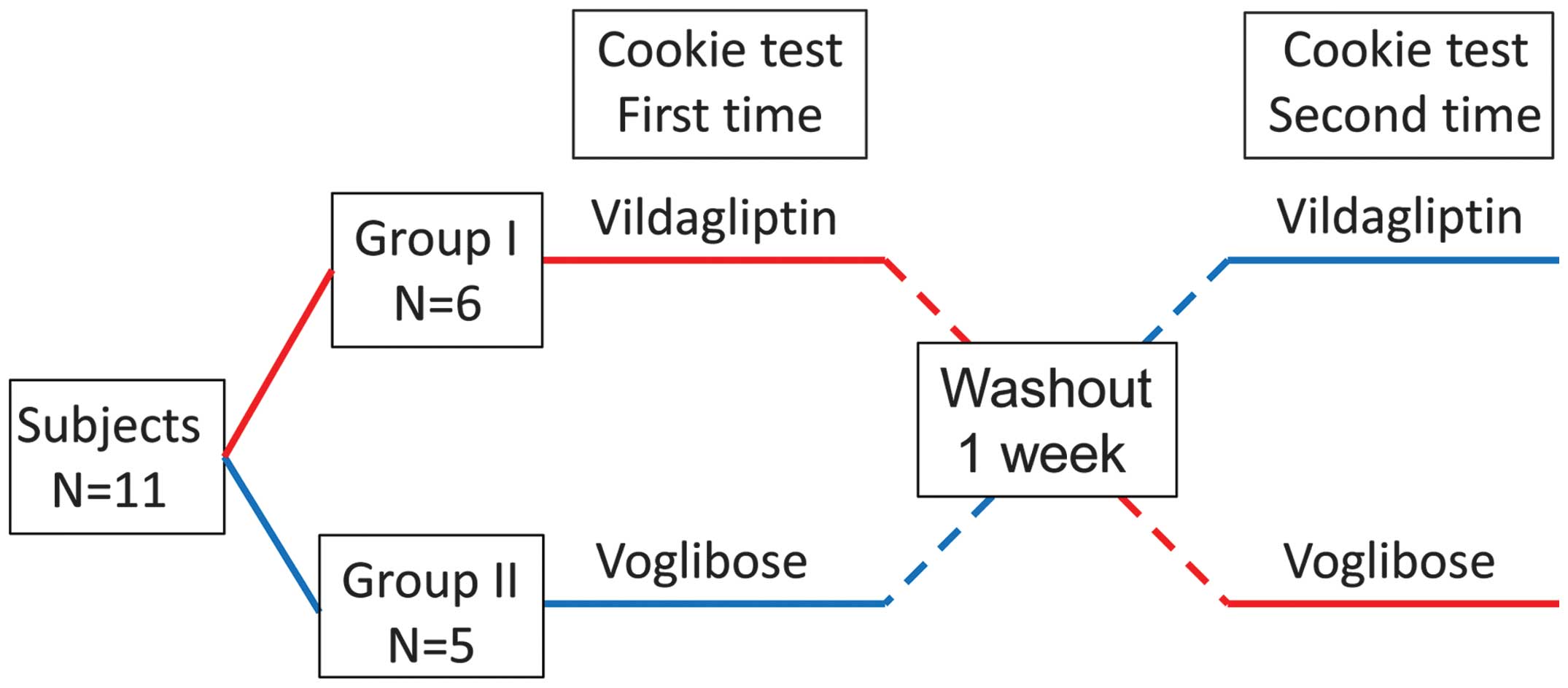|
1
|
Bansal S, Buring JE, Rifai N, et al:
Fasting compared with nonfasting triglycerides and risk of
cardiovascular events in women. JAMA. 298:309–316. 2007. View Article : Google Scholar : PubMed/NCBI
|
|
2
|
Nordestgaard BG, Benn M, Schnohr P and
Tybjaerg-Hansen A: Nonfasting triglycerides and risk of myocardial
infarction, ischemic heart disease, and death in men and women.
JAMA. 298:299–308. 2007. View Article : Google Scholar : PubMed/NCBI
|
|
3
|
Véniant MM, Pierotti V, Newland D, et al:
Susceptibility to atherosclerosis in mice expressing exclusively
apolipoprotein B48 or apolipoprotein B100. J Clin Invest.
100:180–188. 1997. View Article : Google Scholar : PubMed/NCBI
|
|
4
|
Bae JH, Bassenge E, Kim KB, et al:
Postprandial hypertriglyceridemia impairs endothelial function by
enhanced oxidant stress. Atherosclerosis. 155:517–523. 2001.
View Article : Google Scholar : PubMed/NCBI
|
|
5
|
van Oostrom AJ, Sijmonsma TP, Verseyden C,
et al: Postprandial recruitment of neutrophils may contribute to
endothelial dysfunction. J Lipid Res. 44:576–583. 2003. View Article : Google Scholar : PubMed/NCBI
|
|
6
|
DeFronzo RA, Fleck PR, Wilson CA and Mekki
Q: Alogliptin Study 010 Group: Efficacy and safety of the
dipeptidyl peptidase-4 inhibitor alogliptin in patients with type 2
diabetes and inadequate glycemic control: a randomized,
double-blind, placebo-controlled study. Diabetes Care.
31:2315–2317. 2008. View Article : Google Scholar : PubMed/NCBI
|
|
7
|
Feng J, Zhang Z, Wallace MB, et al:
Discovery of alogliptin: a potent, selective, bioavailable, and
efficacious inhibitor of dipeptidyl peptidase IV. J Med Chem.
50:2297–2300. 2007. View Article : Google Scholar : PubMed/NCBI
|
|
8
|
Moritoh Y, Takeuchi K, Asakawa T, Kataoka
O and Odaka H: Chronic administration of alogliptin, a novel,
potent, and highly selective dipeptidyl peptidase-4 inhibitor,
improves glycemic control and beta-cell function in obese diabetic
ob/ob mice. Eur J Pharmacol. 588:325–332. 2008. View Article : Google Scholar : PubMed/NCBI
|
|
9
|
Matikainen N, Mänttäri S, Schweizer A, et
al: Vildagliptin therapy reduces postprandial intestinal
triglyceride-rich lipoprotein particles in patients with type 2
diabetes. Diabetologia. 49:2049–2057. 2006. View Article : Google Scholar : PubMed/NCBI
|
|
10
|
Tremblay AJ, Lamarche B, Deacon CF,
Weisnagel SJ and Couture P: Effect of sitagliptin therapy on
postprandial lipoprotein levels in patients with type 2 diabetes.
Diabetes Obes Metab. 13:366–373. 2011. View Article : Google Scholar : PubMed/NCBI
|
|
11
|
Noda Y, Miyoshi T, Oe H, et al: Alogliptin
ameliorates postprandial lipemia and postprandial endothelial
dysfunction in non-diabetic subjects: a preliminary report.
Cardiovasc Diabetol. 12:82013. View Article : Google Scholar : PubMed/NCBI
|
|
12
|
Ayaori M, Iwakami N, Uto-Kondo H, et al:
Dipeptidyl peptidase-4 inhibitors attenuate endothelial function as
evaluated by flow-mediated vasodilatation in type 2 diabetic
patients. J Am Heart Assoc. 2:e0032772013. View Article : Google Scholar : PubMed/NCBI
|
|
13
|
Nakamura K, Oe H, Kihara H, et al: DPP-4
inhibitor and alpha-glucosidase inhibitor equally improve
endothelial function in patients with type 2 diabetes: EDGE study.
Cardiovasc Diabetol. 13:1102014. View Article : Google Scholar : PubMed/NCBI
|
|
14
|
Hiki M, Shimada K, Kiyanagi T, et al:
Single administration of alpha-glucosidase inhibitors on
endothelial function and incretin secretion in diabetic patients
with coronary artery disease - Juntendo University trial: effects
of miglitol on endothelial vascular reactivity in type 2 diabetic
patients with coronary heart disease (J-MACH). Circ J.
74:1471–1478. 2010. View Article : Google Scholar : PubMed/NCBI
|
|
15
|
Basu A, Charkoudian N, Schrage W, et al:
Beneficial effects of GLP-1 on endothelial function in humans:
dampening by glyburide but not by glimepiride. Am J Physiol
Endocrinol Metab. 293:E1289–E1295. 2007. View Article : Google Scholar : PubMed/NCBI
|
|
16
|
Ceriello A, Esposito K, Testa R, et al:
The possible protective role of glucagon-like peptide 1 on
endothelium during the meal and evidence for an ‘endothelial
resistance’ to glucagon-like peptide 1 in diabetes. Diabetes Care.
34:697–702. 2011. View Article : Google Scholar : PubMed/NCBI
|
|
17
|
Nyström T, Gutniak MK, Zhang Q, et al:
Effects of glucagon-like peptide-1 on endothelial function in type
2 diabetes patients with stable coronary artery disease. Am J
Physiol Endocrinol Metab. 287:E1209–E1215. 2004. View Article : Google Scholar : PubMed/NCBI
|
|
18
|
Hattori Y, Jojima T, Tomizawa A, et al: A
glucagon-like peptide-1 (GLP-1) analogue, liraglutide, upregulates
nitric oxide production and exerts anti-inflammatory action in
endothelial cells. Diabetologia. 53:2256–2263. 2010. View Article : Google Scholar : PubMed/NCBI
|
|
19
|
Qin X, Shen H, Liu M, et al: GLP-1 reduces
intestinal lymph flow, triglyceride absorption, and apolipoprotein
production in rats. Am J Physiol Gastrointest Liver Physiol.
288:G943–G949. 2005. View Article : Google Scholar : PubMed/NCBI
|
|
20
|
Wøjdemann M, Wettergren A, Sternby B, et
al: Inhibition of human gastric lipase secretion by glucagon-like
peptide-1. Dig Dis Sci. 43:799–805. 1998. View Article : Google Scholar : PubMed/NCBI
|
|
21
|
Hsieh J, Longuet C, Baker CL, et al: The
glucagon-like peptide 1 receptor is essential for postprandial
lipoprotein synthesis and secretion in hamsters and mice.
Diabetologia. 53:552–561. 2010. View Article : Google Scholar
|
|
22
|
Kato T, Inoue T and Node K: Postprandial
endothelial dysfunction in subjects with new-onset type 2 diabetes:
an acarbose and nateglinide comparative study. Cardiovasc Diabetol.
9:122010. View Article : Google Scholar : PubMed/NCBI
|
|
23
|
Kitano D, Chiku M, Li Y, et al: Miglitol
improves postprandial endothelial dysfunction in patients with
acute coronary syndrome and new-onset postprandial hyperglycemia.
Cardiovasc Diabetol. 12:922013. View Article : Google Scholar : PubMed/NCBI
|
|
24
|
Masuda D, Nakagawa-Toyama Y, Nakatani K,
et al: Ezetimibe improves postprandial hyperlipidaemia in patients
with type IIb hyperlipidaemia. Eur J Clin Invest. 39:689–698. 2009.
View Article : Google Scholar : PubMed/NCBI
|












